Noah Wright

Data Strategy • Performance Analytics • Public Service • R Coding • Visualization
LinkedIn
Housing by Occupied Unit Count - Chicago Neighborhoods
In September of 2015, the Washington Post analyzed census data to asses the breakdown of housing by unit count for major American cities. After reading that article, I had a lot of follow-up questions and interest in how other cities and housing types shook out.
I did an extension of this analysis looking at smaller U.S. cities and sorting by different housing types. However, one thing that looking at these distributions by city leaves out is that there is quite a bit of variety within the context of a single “city”. Chicago, where I live, has some of the densest neighborhoods in America as well as neighborhoods that are practically suburbs.
The top 10 Chicago neighborhoods with the least single-family detached housing are comparable to the densest U.S. cities:
Chicago neighborhoods with the least single-family detached housing

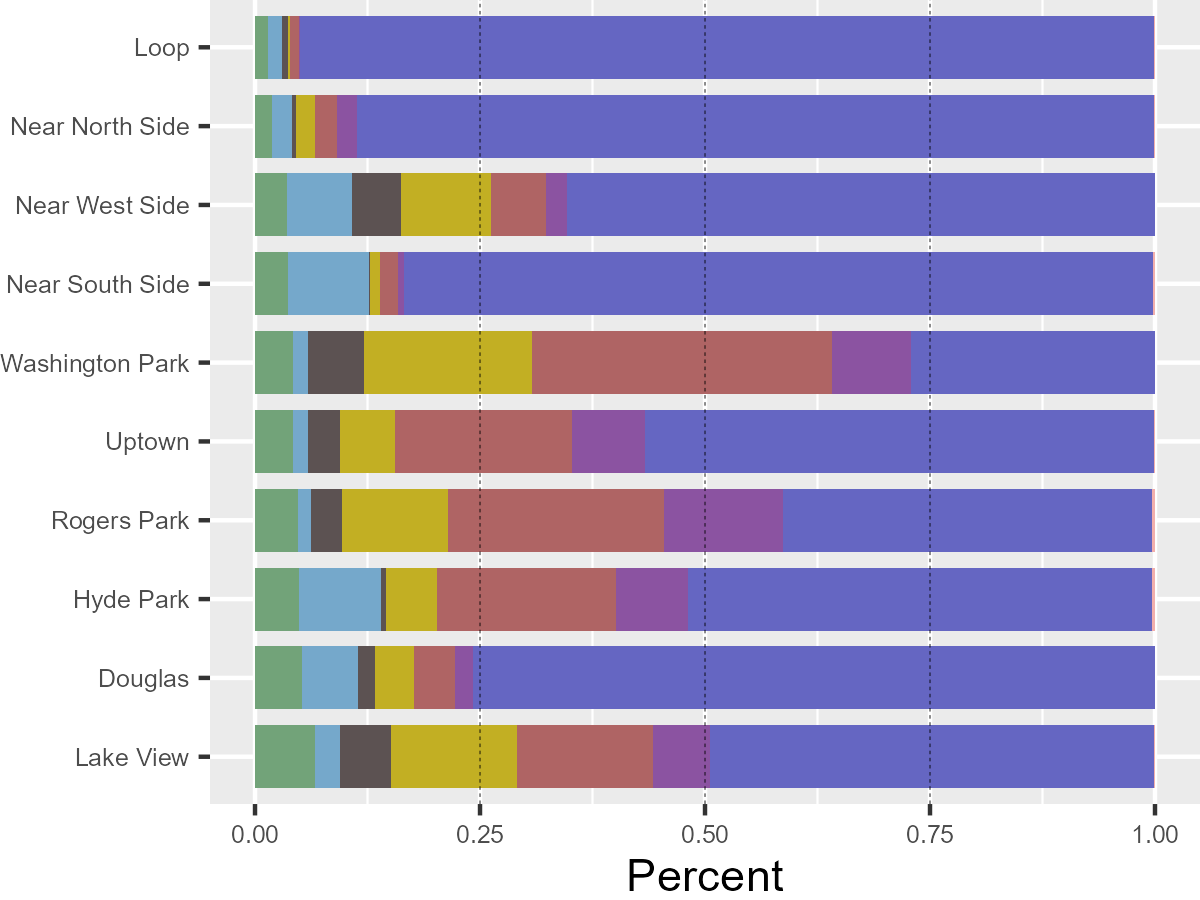
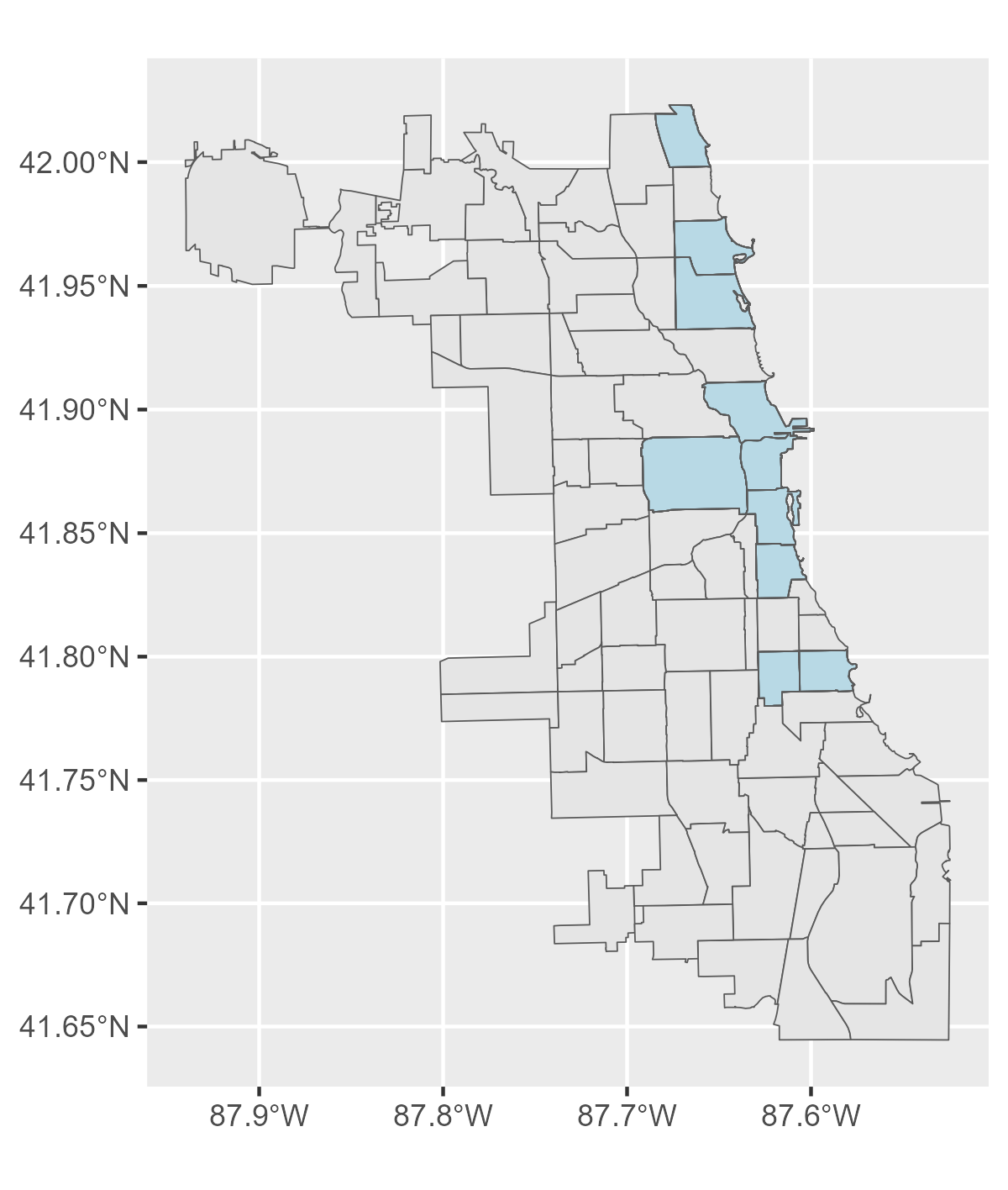
These neighborhoods cluster downtown, but also along the lake shore, which has extensive high-rise waterfront condo developments.
At the other end, the top 10 Chicago neighborhoods with the most single-family detached housing are comparable to suburban cities:
Chicago Neighborhoods with the most single-family detached housing

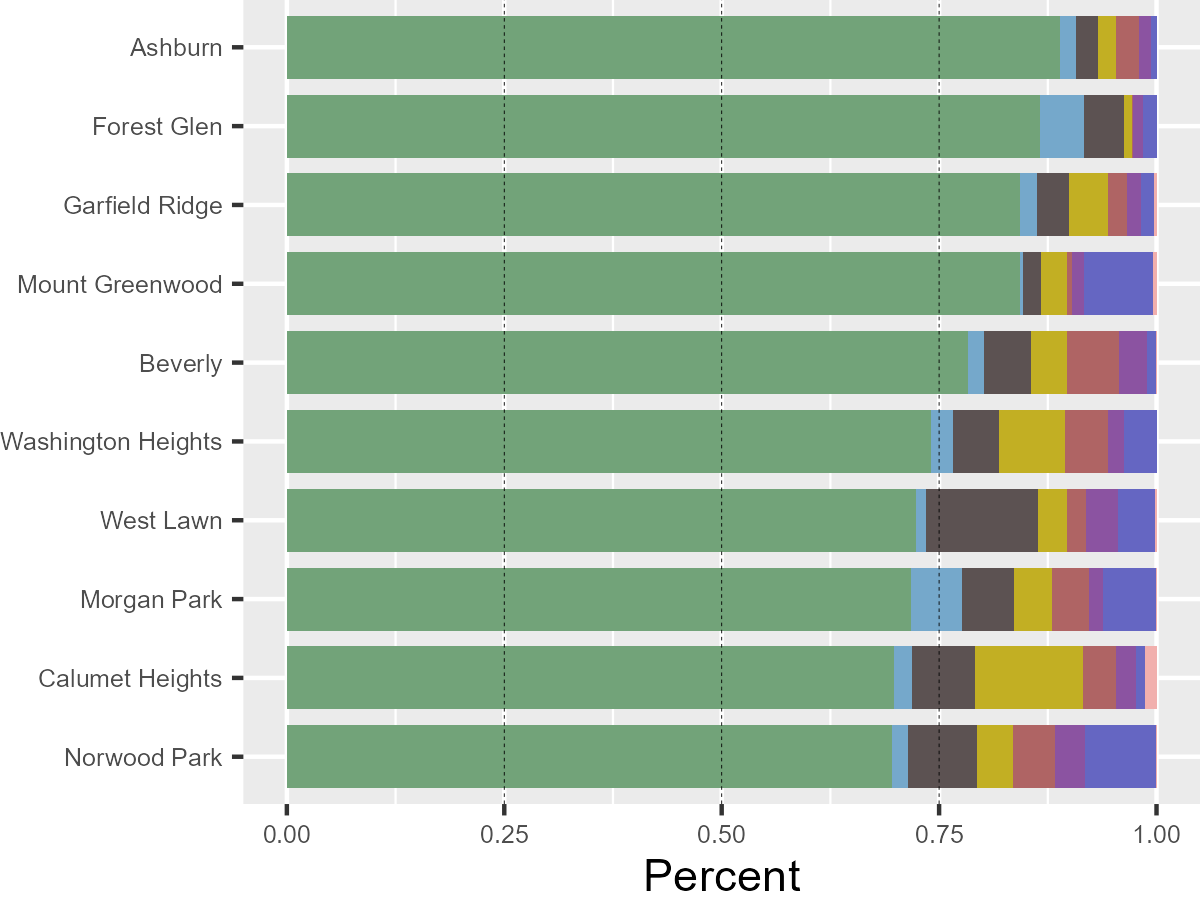
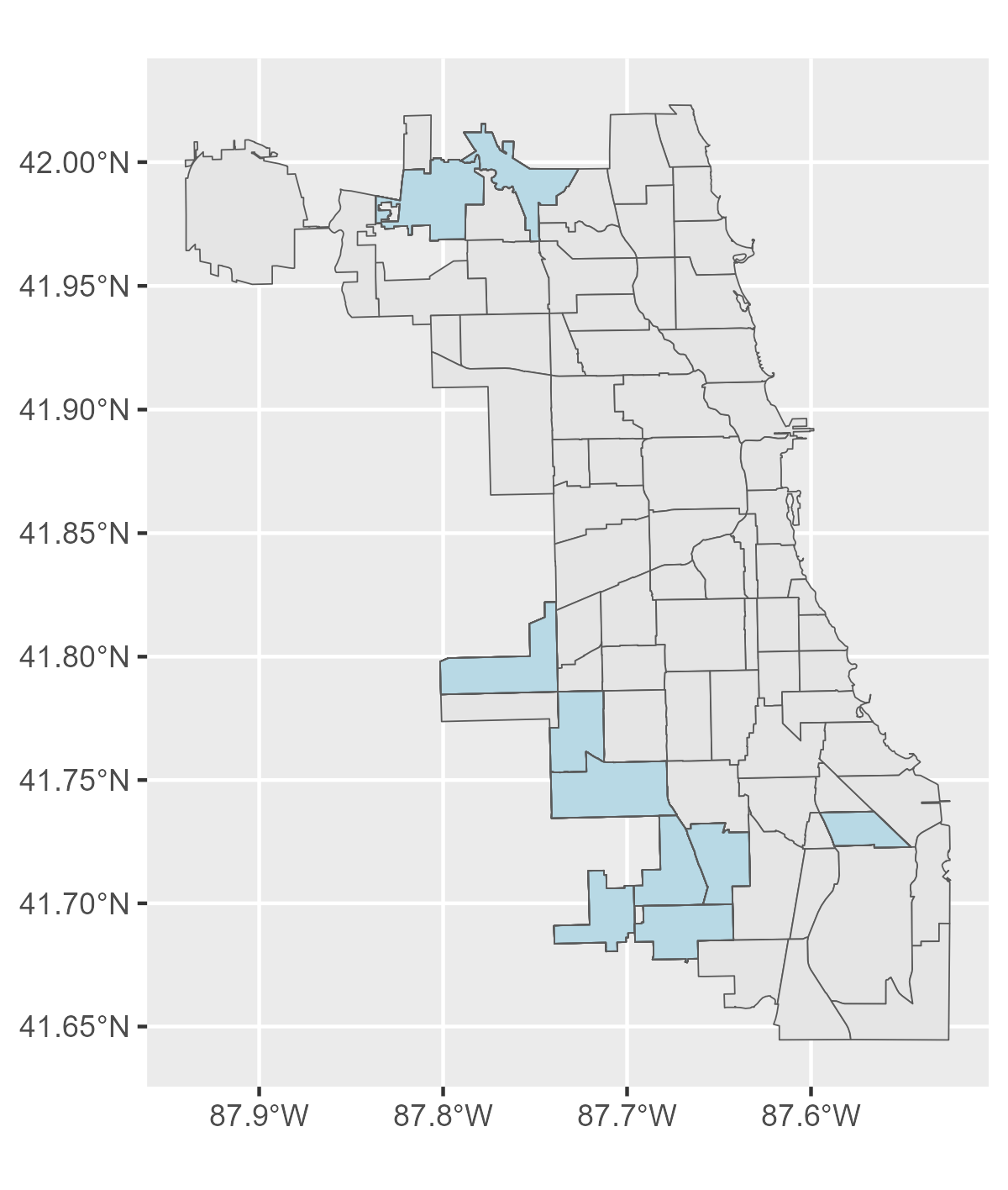
And this map is almost the exact opposite of the density map: all of the most single-family neighborhoods are at the edges of the city.
But unlike many U.S. cities where the skyscraper district transitions straight into single-family housing, Chicago also has an extensive amount of missing middle housing:
All cities with the most “missing-middle” housing

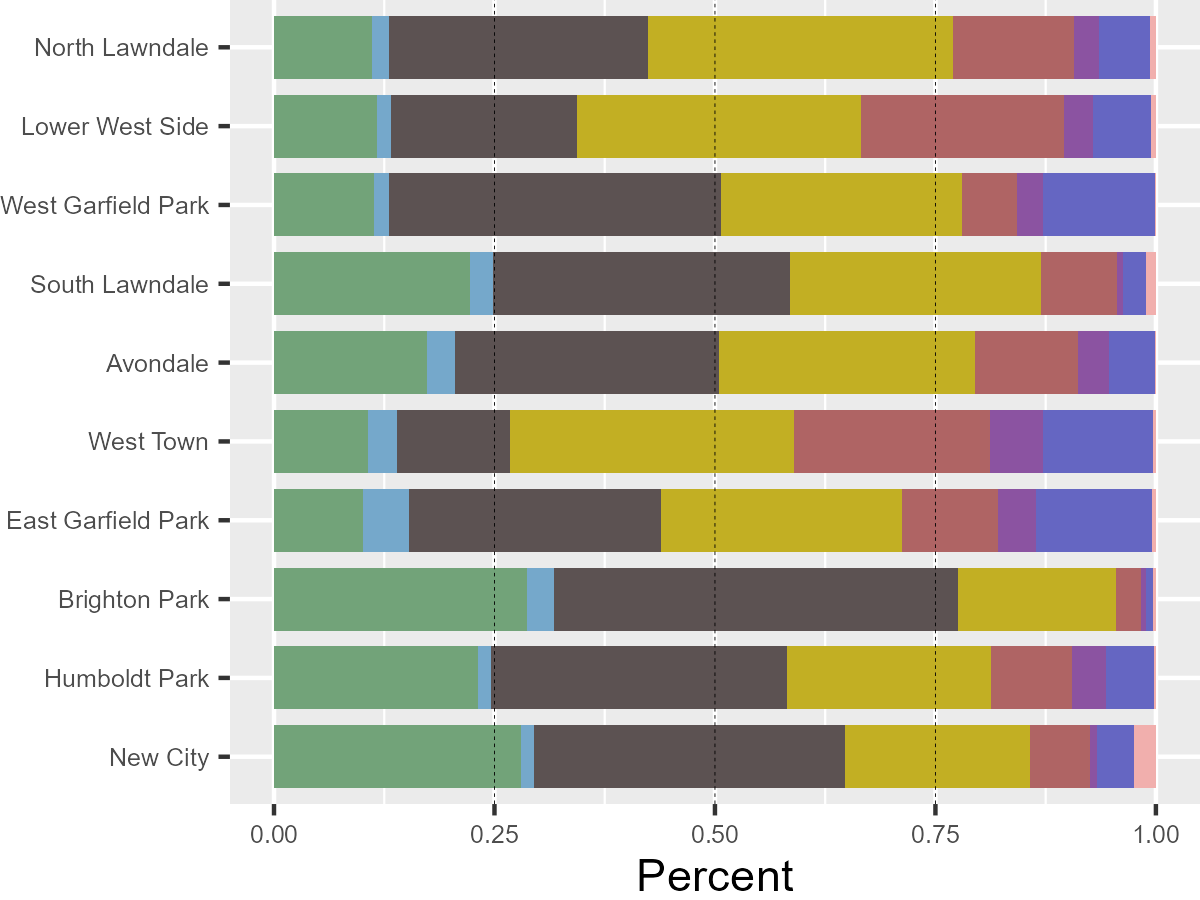
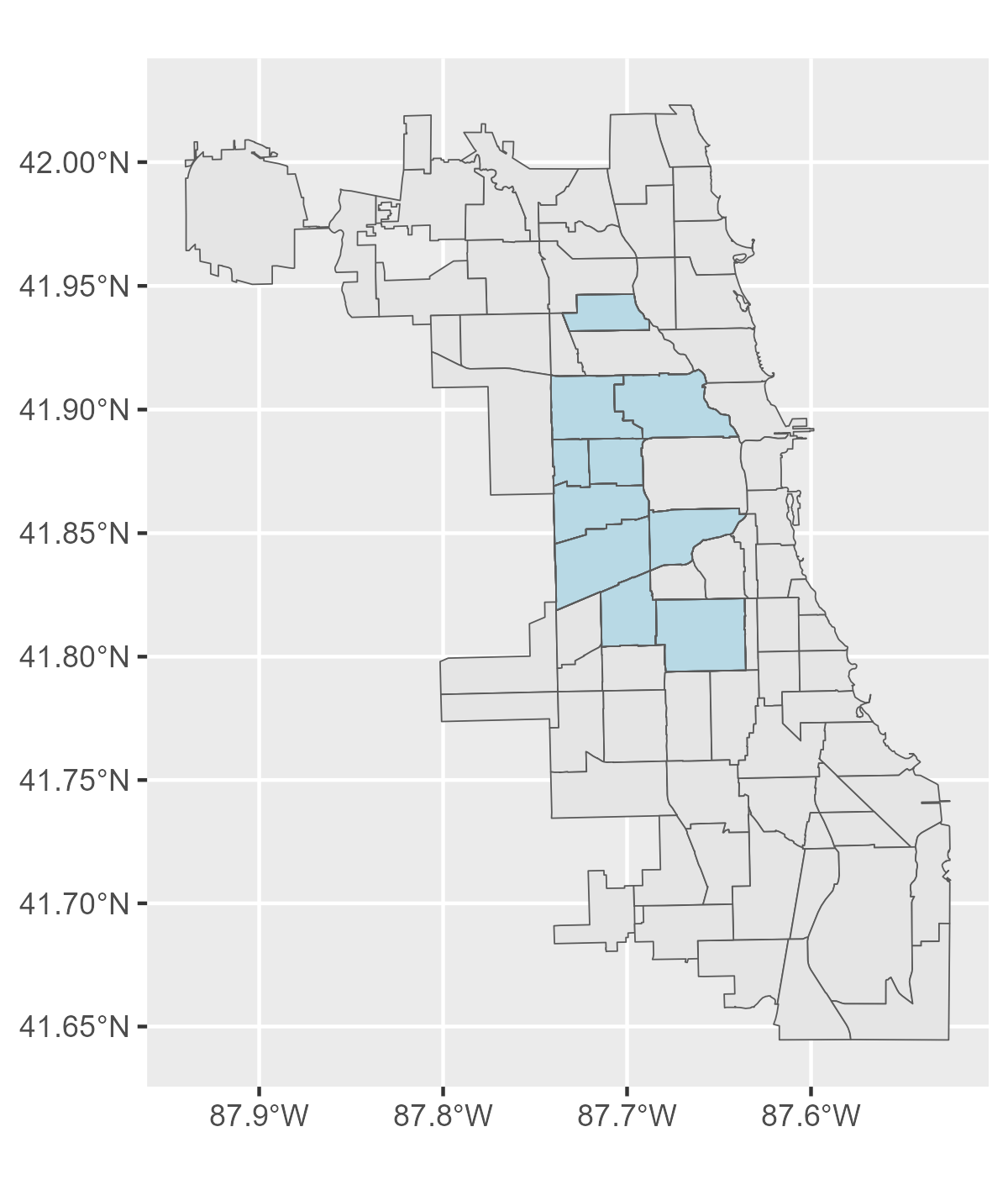
These neighborhoods form a near-perfect ring between the dense downtown and the single-family neighborhoods at the periphery.
Why does all this matter? Because at the end of the day, this is about the freedom to choose. Our national attempt to mandate single-family detached housing and automobiles over all other modes of living has been costly, stifling, and environmentally ruinous. Any solution to our current housing crisis is going to require a move away from this status quo. And while Chicago has a lot of work to do, it’s a homegrown example of how a diverse array of modes of living can coexist in a single urban fabric.
This research is an extension of the analysis performed in:
Badger, E., & Ingraham, C. (2015, September 21). “The most popular type of home in every major American city, charted” - The Washington Post. https://tinyurl.com/bdd2nx45